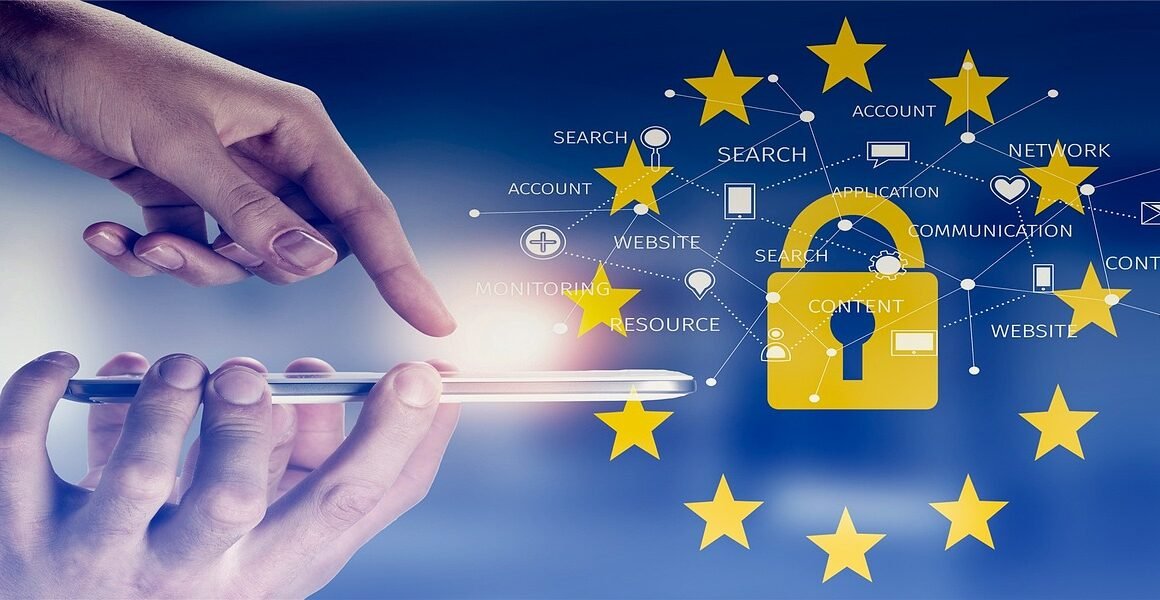Imagine waking up to find your computer screen locked, a menacing message demanding payment in cryptocurrency to regain access to your files. This isn’t a scene from a futuristic thriller, but a stark reality for countless individuals and organizations falling victim to ransomware attacks. This blog post delves into the world of ransomware, exploring its types, how it works, preventive measures, and what to do if you become a victim. Understanding ransomware is crucial in today’s digital landscape, as proactive defense is the most effective strategy against this pervasive threat.
What is Ransomware?
Ransomware is a type of malicious software, or malware, designed to encrypt a victim’s files, rendering them inaccessible. The attackers then demand a ransom payment, typically in cryptocurrency, in exchange for a decryption key to restore access to the data. Ransomware attacks can cripple businesses, disrupt critical infrastructure, and cause significant financial and reputational damage.
How Ransomware Works
The ransomware attack lifecycle generally follows these steps:
- Infection: Ransomware typically infiltrates a system through various methods, including:
Phishing emails: Malicious emails containing infected attachments or links that, when clicked, download the ransomware.
Drive-by downloads: Visiting compromised websites that silently download ransomware onto the user’s device.
Malvertising: Malicious advertisements on legitimate websites that redirect users to infected sites.
Software vulnerabilities: Exploiting unpatched vulnerabilities in software to gain access to the system.
- Encryption: Once inside the system, the ransomware encrypts files using a strong encryption algorithm, making them unreadable. File extensions are often changed to signal that files have been encrypted. For instance, your .docx files might become .docx.locked.
- Ransom Note: The ransomware displays a ransom note, typically as a pop-up window or text file, informing the victim about the encryption and demanding a ransom payment. The note includes instructions on how to pay the ransom, often in Bitcoin or other cryptocurrencies, and may include a deadline for payment.
- Payment and Decryption (Potentially): If the victim pays the ransom, the attackers may provide a decryption key to unlock the files. However, there is no guarantee that paying the ransom will result in the recovery of the data. In some cases, attackers may not provide a functional decryption key or may demand additional payments.
Types of Ransomware
Ransomware comes in various forms, each with its own characteristics and target strategies:
- Crypto Ransomware: This is the most common type of ransomware, which encrypts files on the victim’s system. Examples include WannaCry, Ryuk, and LockBit.
- Locker Ransomware: Locker ransomware locks the victim out of their device entirely, preventing them from accessing any files or applications. While it doesn’t encrypt files, it effectively renders the device unusable until the ransom is paid.
- Scareware: Scareware uses deceptive tactics to trick users into believing their system is infected with malware and then demands payment for fake antivirus software.
- Doxware (Leakware): This type of ransomware threatens to release sensitive information online if the ransom is not paid.
Ransomware Attacks: Understanding the Impact
The impact of a ransomware attack can be devastating for individuals and organizations alike. Beyond the immediate financial cost of the ransom, there are often significant indirect costs associated with recovery, downtime, and reputational damage.
Financial Impact
- Ransom Payments: The most obvious financial cost is the ransom payment itself. Ransom demands can range from a few hundred dollars to millions of dollars, depending on the target and the sensitivity of the data.
Example: In 2021, Colonial Pipeline paid a $4.4 million ransom after a ransomware attack disrupted fuel supplies across the East Coast of the United States.
- Recovery Costs: Recovering from a ransomware attack can be expensive, even if the ransom is paid. Costs may include:
Hiring cybersecurity experts to investigate the attack and assist with recovery.
Replacing or repairing damaged hardware and software.
Lost productivity due to downtime.
- Legal and Compliance Costs: Ransomware attacks can also trigger legal and compliance obligations, particularly if sensitive data is compromised. These costs may include:
Notification costs for informing affected individuals and regulatory bodies.
Fines and penalties for non-compliance with data protection regulations.
Operational Disruption
Ransomware attacks can cause significant operational disruption, leading to:
- Downtime: Businesses may be unable to operate normally while systems are encrypted and unavailable.
Example: Hospitals that are hit with ransomware may be forced to divert patients to other facilities, potentially impacting patient care.
- Data Loss: Even if the ransom is paid, there is no guarantee that all data will be recovered. Some files may be permanently lost due to corruption or incomplete decryption.
- Reputational Damage: A ransomware attack can damage a company’s reputation, leading to a loss of customer trust and business.
Psychological Impact
The psychological impact of a ransomware attack can be significant, particularly for individuals who have had their personal data compromised. This can lead to:
- Stress and Anxiety: Dealing with a ransomware attack can be a stressful and overwhelming experience.
- Fear of Identity Theft: Individuals may fear that their personal information will be used for identity theft or other fraudulent activities.
- Loss of Trust: Victims may lose trust in the organizations that were responsible for protecting their data.
Prevention Strategies: Protecting Your Systems
The best defense against ransomware is prevention. Implementing a comprehensive cybersecurity strategy that includes the following measures can significantly reduce the risk of attack.
Robust Cybersecurity Infrastructure
- Firewall: Implementing a firewall to control network traffic and block unauthorized access.
- Antivirus Software: Using a reputable antivirus software and keeping it updated to detect and remove malware.
- Intrusion Detection and Prevention Systems (IDS/IPS): Employing IDS/IPS to monitor network traffic for malicious activity and automatically block or mitigate threats.
- Endpoint Detection and Response (EDR): EDR tools continuously monitor endpoints for suspicious behavior and provide real-time threat detection and response capabilities.
Regular Data Backups
- Offsite Backups: Regularly backing up data to an offsite location, such as a cloud service or external hard drive, to ensure that data can be restored in the event of a ransomware attack.
3-2-1 Rule: Follow the 3-2-1 rule of backups: keep three copies of your data, on two different media, with one copy stored offsite.
- Backup Verification: Regularly verifying backups to ensure that they are working correctly and can be used to restore data.
Employee Training and Awareness
- Phishing Awareness: Training employees to recognize and avoid phishing emails and other social engineering attacks.
Simulated Phishing Campaigns: Conducting simulated phishing campaigns to test employees’ awareness and identify areas where additional training is needed.
- Safe Browsing Practices: Educating employees about safe browsing practices, such as avoiding suspicious websites and downloading files from untrusted sources.
- Password Security: Enforcing strong password policies and encouraging employees to use unique, complex passwords for all accounts.
Software Updates and Patch Management
- Regular Updates: Regularly updating software and operating systems to patch security vulnerabilities.
Automated Patch Management: Using automated patch management tools to ensure that updates are applied promptly.
- Vulnerability Scanning: Regularly scanning systems for vulnerabilities and addressing them promptly.
Incident Response: What to Do After an Attack
Even with the best prevention measures, a ransomware attack can still occur. Having a well-defined incident response plan in place can help minimize the damage and speed up recovery.
Containment
- Isolate Infected Systems: Immediately isolate infected systems from the network to prevent the ransomware from spreading.
- Disconnect Network Shares: Disconnect any network shares that may be accessible to the infected systems.
Investigation
- Identify the Source: Determine the source of the infection to understand how the ransomware entered the system.
- Assess the Damage: Assess the extent of the damage to determine which files have been encrypted and which systems have been affected.
- Preserve Evidence: Preserve any evidence that may be useful for law enforcement or for understanding the attack.
Eradication
- Remove the Ransomware: Use antivirus software or other tools to remove the ransomware from the infected systems.
- Patch Vulnerabilities: Address any vulnerabilities that were exploited by the ransomware to prevent future attacks.
Recovery
- Restore from Backups: Restore encrypted files from backups.
- Verify Data Integrity: Verify the integrity of the restored data to ensure that it has not been corrupted.
Reporting
- Report to Law Enforcement: Report the attack to law enforcement agencies, such as the FBI or local police.
- Notify Affected Parties: Notify any affected parties, such as customers or business partners, if their data has been compromised.
Should You Pay the Ransom?
This is a complex and controversial question. Law enforcement agencies generally advise against paying the ransom, as it encourages further attacks and there is no guarantee that the attackers will provide a decryption key. However, in some cases, organizations may feel that paying the ransom is the only way to recover critical data.
- Considerations: Before paying the ransom, consider the following:
Alternatives: Are there alternative ways to recover the data, such as from backups or using a decryption tool?
Risk of Non-Recovery: Is there a risk that the attackers will not provide a decryption key, even if the ransom is paid?
Financial Impact: What is the financial impact of not recovering the data?
Legal and Ethical Considerations: Are there any legal or ethical considerations that would prevent you from paying the ransom?
Conclusion
Ransomware poses a significant threat to individuals and organizations worldwide. By understanding how ransomware works, implementing robust prevention measures, and having a well-defined incident response plan in place, you can significantly reduce your risk of becoming a victim. Remember to prioritize employee training, regular data backups, and diligent software updates. In the unfortunate event of an attack, act swiftly and decisively to contain the damage and restore your systems. Staying informed and proactive is key to safeguarding your digital assets in the ever-evolving landscape of cyber threats.



